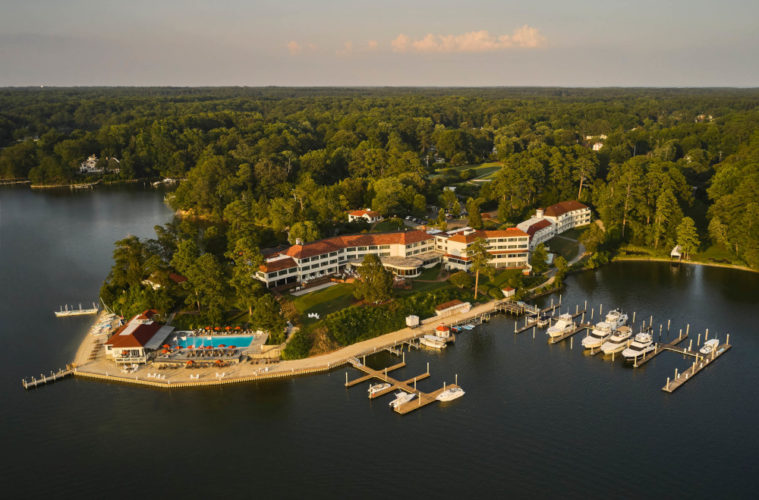What better way to celebrate your 75th anniversary than to reinvent yourself? That’s what’s happening at the Tides Inn, the laid-back destination overlooking Carter’s Creek on Virginia’s Northern Neck.
It opened its doors in 1947. Back then, its 47 rooms started at $14 a night. It became a favored waterside retreat, especially for Richmond’s West Enders seeking solace an hour east of town on “The Rivah.”
Then the Enchantment Group bought the property 20 years ago, and began to re-evaluate the inn, its mission, and its waterfront site. Carter’s Creek flows into the Rappahannock River, which in turn feeds into the Chesapeake Bay, the nation’s most important estuary, so its impact is significant.
“It’s a traditional, Virginia-type of inn, and there was a lot of nostalgia for the lifestyle of the fifties from back when it first opened,” says Dana Tang, part owner of the Tides Inn. “Over the years, one of the things that was happening was that they were not looking deeply into what was missing, like the inn’s relationships to the creek and the Chesapeake Bay.”
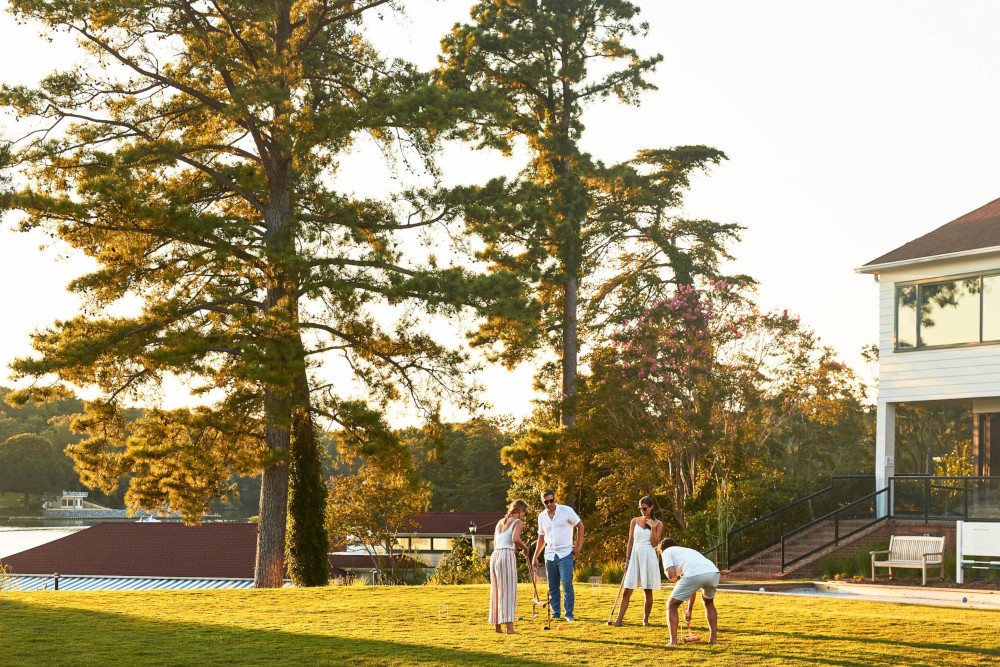

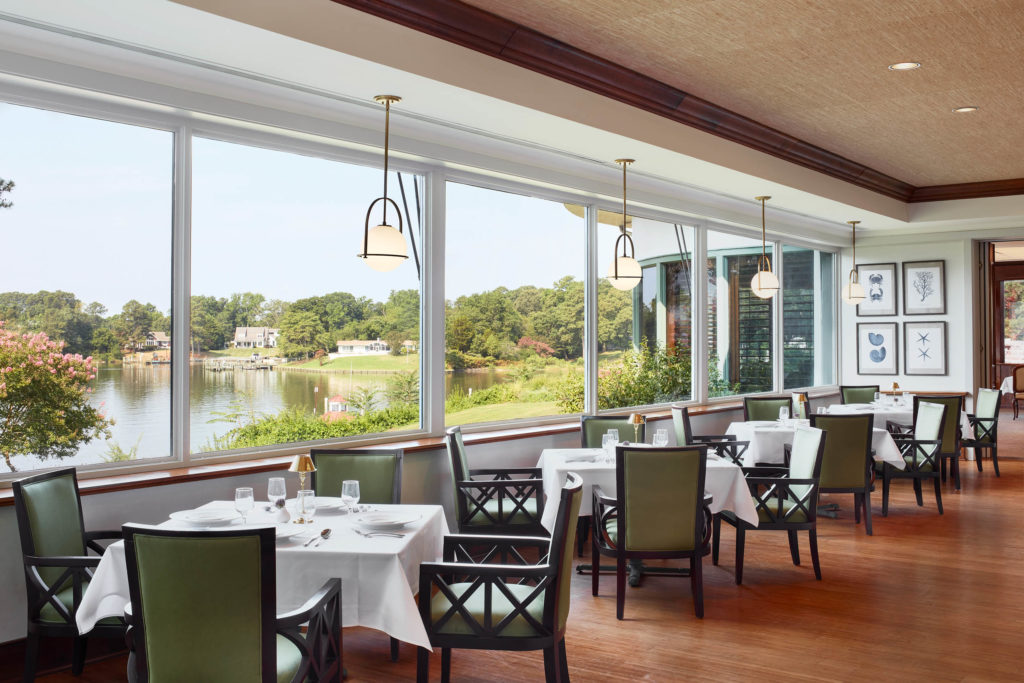

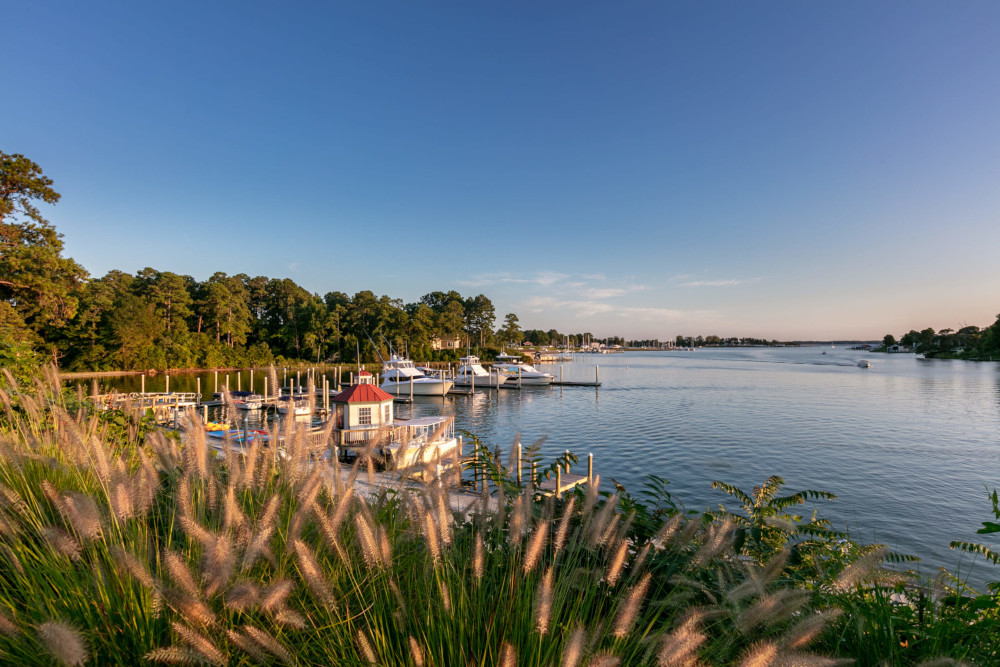

Tang’s also a partner in New York-based Gluckman Tang Architects, and she was lead designer on a 2021 master plan that reconsidered how the inn interacts with its environment.
One of the inn’s first moves last year was to hire a resident ecologist. Will Smiley not only holds a master’s degree in sustainability, but taught at nearby Christchurch School for 17 years. Now he’s developing programs and outings for guests, including excursions to a new oyster reef, and curating crabbing experiences.
“He’s starting an oyster farm of our own, and he teaches it to guests – they pull them up in cages, sort the oysters, and put them back in the water,” Tang says. “Then they’ll cook them in a roaster on the beach.”
The master plan was developed with Richmond-based Water Street Studio, an environmental design firm. “It was important to have a landscape architect who not only understands the local landscape and native vegetation – but who shares the vision of landscape restoration and design as a means to support natural ecosystems and biodiversity,” Tang says.
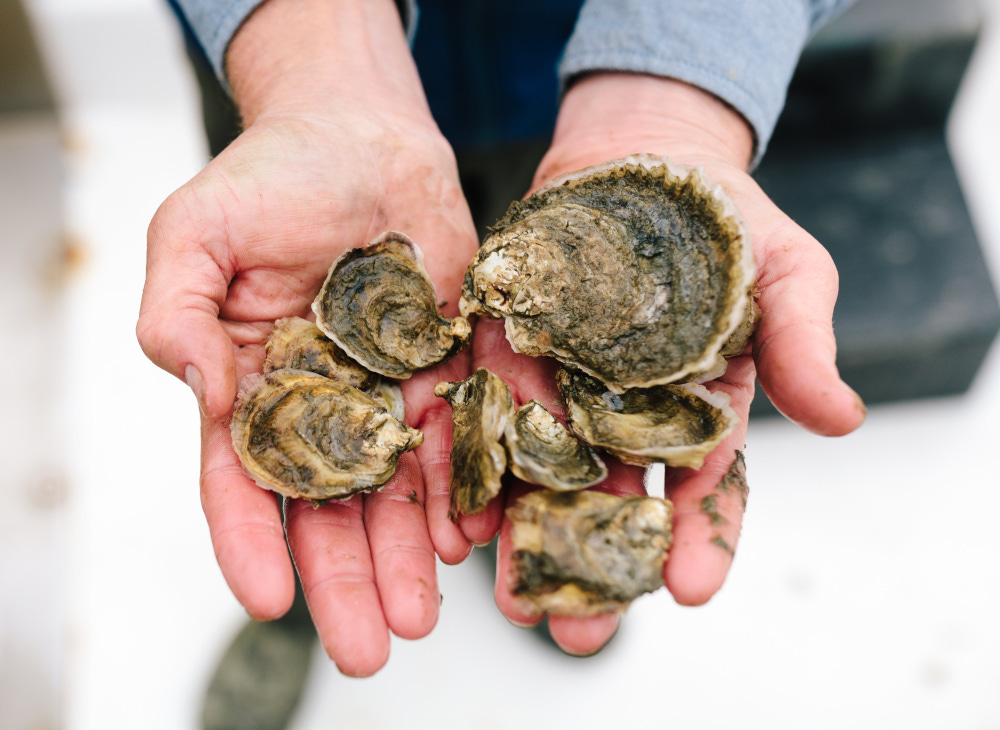

The first step was to reimagine and restore the inn’s shoreline. The banks of Carter’s Creek were steep – and shrinking with each major storm. “Bluffs would cleave off and take trees with them, but this restoration creates a planted shoreline to absorb the forces of storms or rising waters without creating erosion,” she says. “Now it’s filtered multiple times with plantings – and the oyster reef is another way, since one oyster can filter more than 50 gallons of water a day.”
Previously, about half of the shoreline was accessible to guests, with only a small beach that was usable. Now guests can enjoy the beach and the water – and 1,300 feet of boardwalk. “The landscape architects created a continuous curve that follows the shoreline and sometimes goes over grasses and sometimes over water,” she says.
Kayakers and paddleboarders can pull up to the boardwalk, and a sailing program runs from it. Better yet, local wildlife is responding to the filtered water. “You see blue herons, ospreys, and raccoons from the shoreline,” she says. “We’ve seen dolphins swimming along the shoreline, a few feet from our kayak – and there are seahorses there now, a sign of clean water.”
The guest experience is changing too. “Now it’s not just about lying in a beach chair, but: ‘What is this place and how can it enrich my life further?” she says.
That’s a thoughtful way for anyone to celebrate an inn’s diamond jubilee anniversary.
For more information, visit tidesinn.com.


